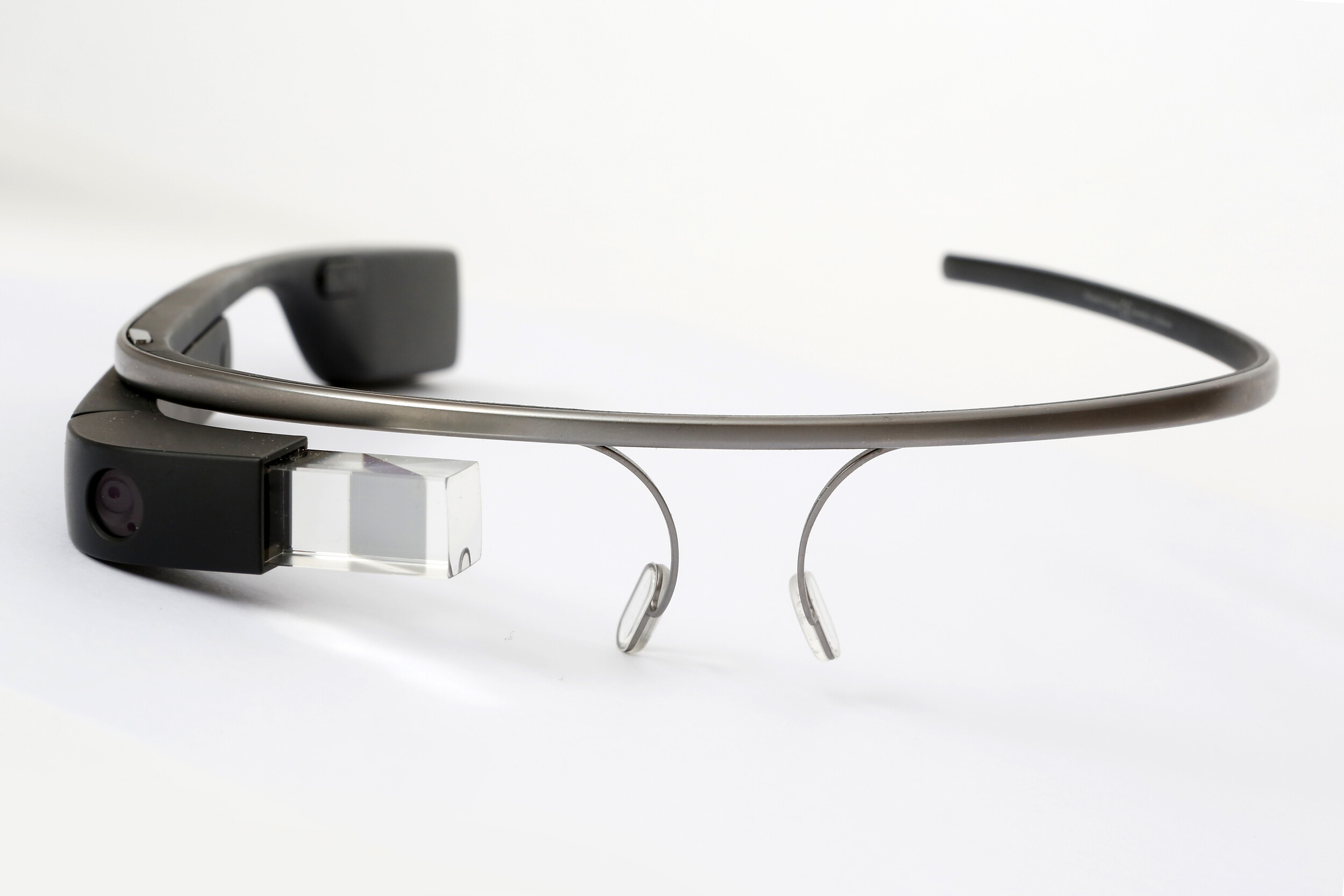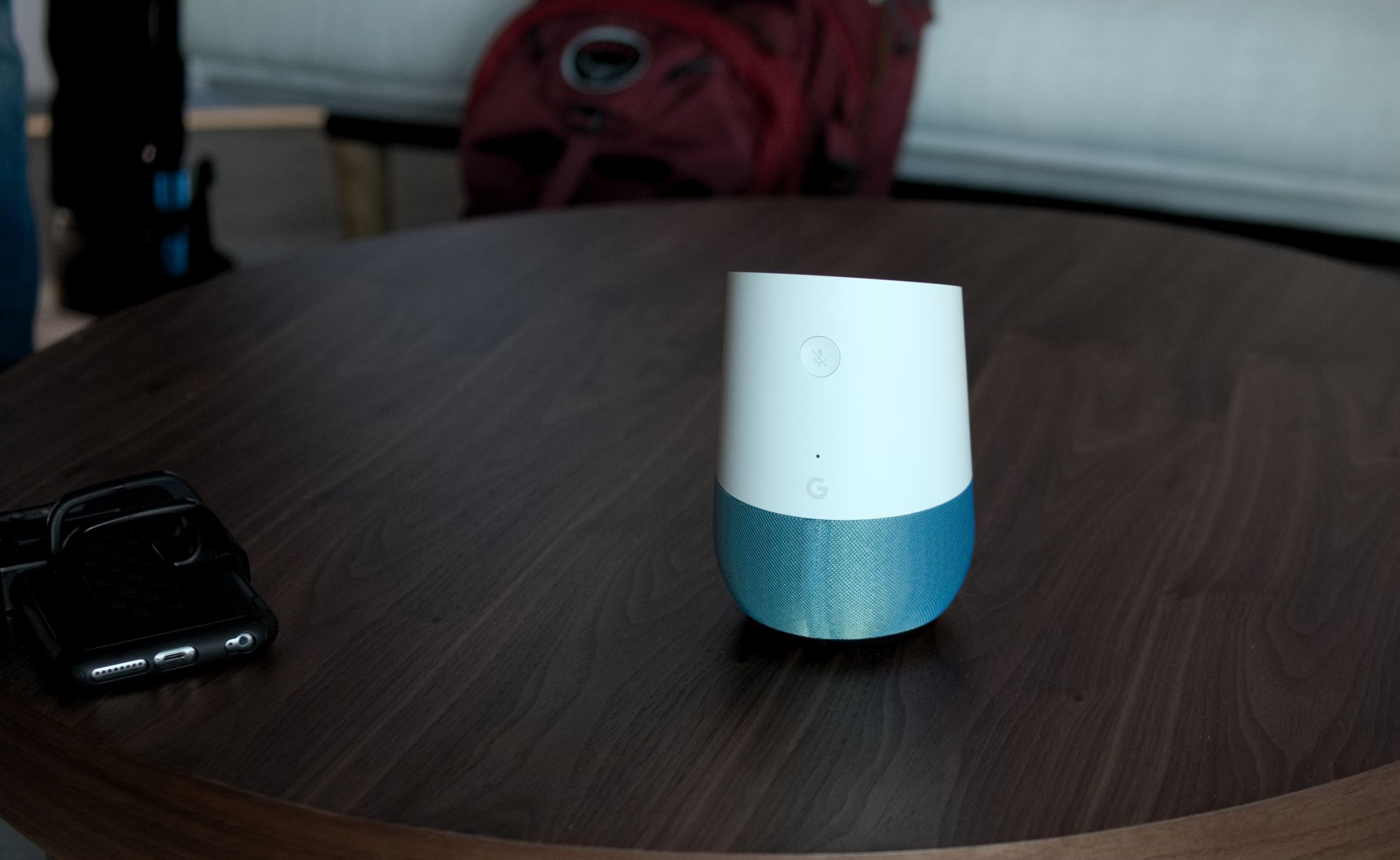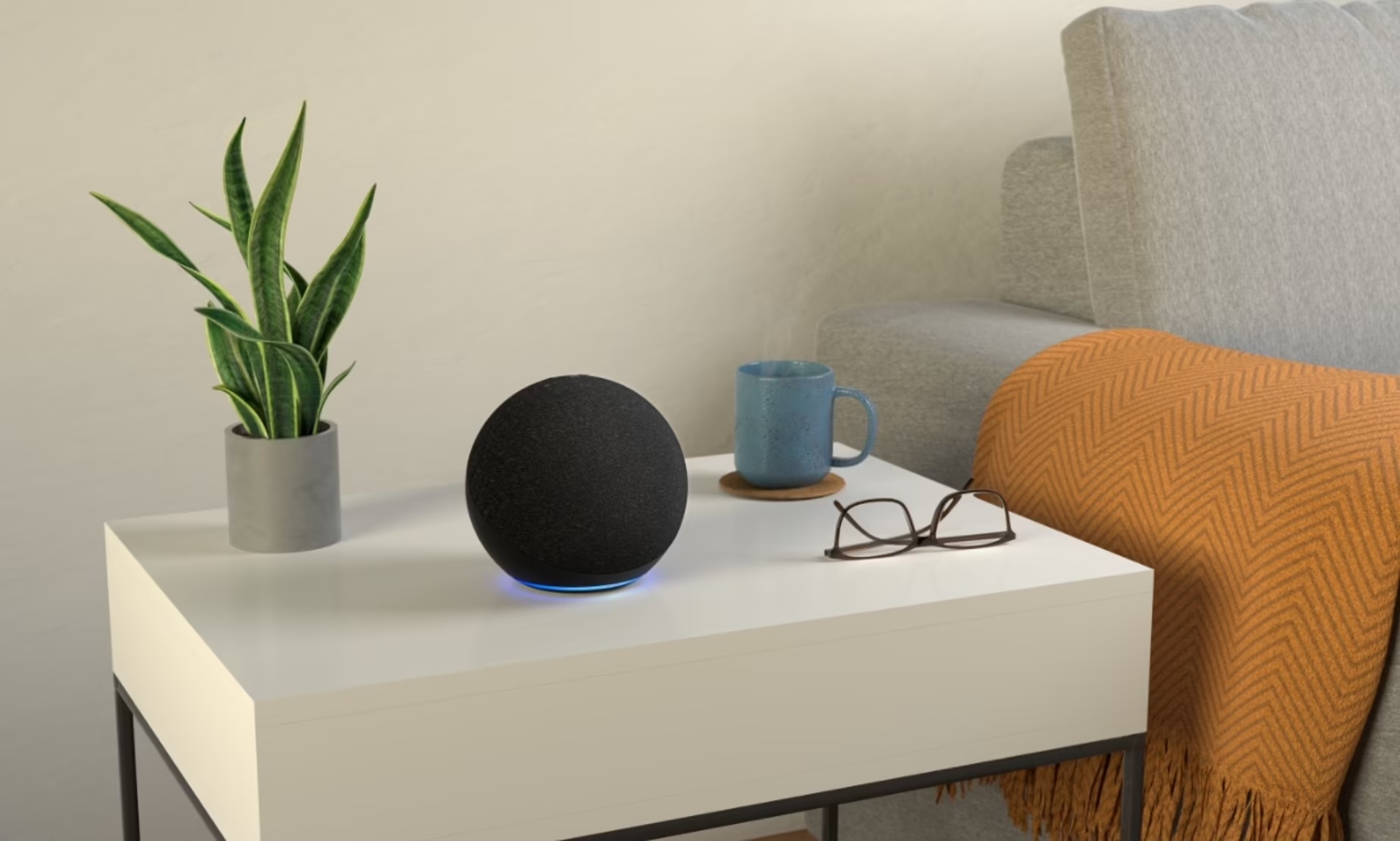Home>Furniture & Design>Interior Design Trends>Why Did Google Glass Fail


Interior Design Trends
Why Did Google Glass Fail
Modified: April 21, 2024
Discover the reasons behind the failure of Google Glass and stay updated on the latest interior design trends. Explore the impact of technology and design on our daily lives.
(Many of the links in this article redirect to a specific reviewed product. Your purchase of these products through affiliate links helps to generate commission for Storables.com, at no extra cost. Learn more)
Introduction
The rise and fall of Google Glass, once hailed as a groundbreaking innovation in wearable technology, is a compelling narrative that sheds light on the intersection of technological advancement, consumer behavior, and societal norms. Launched in 2013, Google Glass was envisioned as a revolutionary hands-free device that would seamlessly integrate augmented reality into daily life, offering users a futuristic experience akin to something out of a science fiction novel.
However, despite the initial excitement and anticipation surrounding its release, Google Glass faced a myriad of challenges that ultimately led to its discontinuation. This captivating tale of triumph and downfall prompts us to delve deeper into the factors that contributed to the demise of this ambitious venture.
The journey of Google Glass serves as a cautionary tale, highlighting the complex dynamics at play when introducing a disruptive technology to the mass market. As we unravel the reasons behind its failure, we gain valuable insights into the intricate relationship between innovation, consumer acceptance, and the ever-evolving landscape of technological trends.
The story of Google Glass is a testament to the unpredictable nature of consumer preferences and the critical role of public perception in shaping the fate of a product. By examining the highs and lows of this pioneering wearable device, we can glean essential lessons that resonate far beyond the realm of technology, offering a compelling narrative that transcends the boundaries of innovation and consumer behavior.
Key Takeaways:
- Google Glass failed due to its high price, privacy concerns, limited use cases, design challenges, and technical limitations. It’s a reminder that innovation must align with practicality, ethics, and societal acceptance.
- The rise and fall of Google Glass highlights the importance of affordability, privacy safeguards, human-centered design, practical applications, and technical prowess in shaping the success of transformative technologies.
Read more: Why Did My Glass Candle Explode
High Price
The exorbitant price tag attached to Google Glass was a significant deterrent for widespread adoption. Priced at $1,500 during its initial release, Google Glass positioned itself as a luxury item rather than a practical, accessible gadget for the average consumer. This lofty price point immediately alienated a vast portion of the market, relegating the device to a niche demographic comprised mainly of tech enthusiasts, early adopters, and affluent individuals.
The steep cost of Google Glass created a formidable barrier to entry, impeding its integration into mainstream consumer culture. The prohibitive pricing not only dissuaded potential buyers but also engendered skepticism regarding the value proposition of the device. Consumers were hesitant to invest in a product that demanded such a substantial financial commitment without a clear demonstration of its utility and long-term viability.
Moreover, the high price of Google Glass accentuated the perception of exclusivity, positioning it as a status symbol rather than a practical tool. This skewed positioning further distanced the device from the average consumer, reinforcing the notion that Google Glass was a luxury indulgence rather than a functional and indispensable innovation.
In the realm of consumer electronics, price sensitivity plays a pivotal role in shaping purchasing decisions. The exorbitant cost of Google Glass overshadowed its potential benefits, rendering it an impractical investment for the majority of consumers. This pricing misstep underscored the disconnect between the aspirations of the product and the economic realities of the target market, ultimately impeding its mass appeal and widespread adoption.
The formidable price barrier posed a formidable challenge for Google Glass, hindering its ability to gain traction and permeate mainstream consumer culture. This pricing misstep serves as a poignant reminder of the pivotal role of affordability in shaping consumer preferences and adoption rates, underscoring the delicate balance between innovation and accessibility in the realm of consumer technology.
Privacy Concerns
Privacy concerns emerged as a prominent and contentious issue surrounding the introduction of Google Glass. The device's built-in camera and display capabilities raised apprehensions regarding surreptitious recording, invasion of privacy, and the potential for unauthorized surveillance. These apprehensions were compounded by the seamless and inconspicuous nature of Google Glass, which allowed users to capture photos and videos discreetly, without the knowledge or consent of those in their vicinity.
The concept of individuals wearing a device capable of recording and transmitting audio-visual data in real-time elicited widespread unease, prompting concerns about the erosion of personal privacy and the blurring of boundaries between public and private spaces. The prospect of being unknowingly recorded in various social settings, including public gatherings, restaurants, and even private residences, fueled apprehensions and catalyzed a wave of resistance against the pervasive presence of Google Glass.
Furthermore, the lack of clear guidelines and regulations governing the use of wearable recording devices such as Google Glass exacerbated privacy anxieties, as it became increasingly challenging to discern when and where recording was taking place. This ambiguity sowed seeds of distrust and unease, as individuals grappled with the uncertainty of being captured on camera without their knowledge or consent.
The intersection of technology and privacy has always been a contentious and delicate terrain, with the advent of Google Glass amplifying these concerns to unprecedented levels. The device's potential to disrupt established norms of privacy and consent underscored the need for robust ethical frameworks and legal safeguards to mitigate the risks associated with its widespread adoption.
The privacy implications of Google Glass reverberated across various sectors, including corporate environments, healthcare facilities, and educational institutions, where the unregulated use of the device posed significant challenges in safeguarding sensitive information and upholding confidentiality protocols. This multifaceted impact underscored the far-reaching consequences of privacy concerns, transcending individual apprehensions to encompass broader societal and institutional considerations.
In essence, the privacy concerns surrounding Google Glass underscored the intricate interplay between technological innovation and ethical considerations, prompting a critical reevaluation of the boundaries between personal privacy, public discourse, and the responsible use of advanced wearable technology. The contentious debate surrounding privacy concerns served as a poignant reminder of the imperative to balance technological progress with ethical stewardship, emphasizing the indispensable role of privacy safeguards in shaping the trajectory of transformative innovations.
Design and Aesthetics
The design and aesthetics of Google Glass played a pivotal role in shaping its reception and ultimate fate in the consumer market. While the device embodied a futuristic vision of wearable technology, its unconventional appearance and conspicuous form factor posed significant challenges in garnering widespread acceptance.
At its core, Google Glass represented a bold departure from traditional eyewear, integrating advanced technological features into a sleek and minimalist frame. However, the distinctive design, characterized by a protruding prism display and a conspicuous camera module, elicited mixed reactions from consumers and observers alike. The juxtaposition of cutting-edge technology with a conspicuous physical presence created a dichotomy that underscored the challenges of seamlessly integrating wearable technology into everyday life.
The unconventional aesthetics of Google Glass also sparked debates regarding social acceptance and fashion sensibilities. The device's distinctive appearance, marked by its distinctive prism and asymmetrical design, presented a departure from conventional eyewear norms, challenging established perceptions of style and functionality. This departure from traditional eyewear aesthetics posed a formidable barrier to mainstream adoption, as consumers grappled with reconciling the futuristic allure of the device with its practicality and social implications.
Furthermore, the conspicuous nature of Google Glass engendered a sense of self-consciousness and unease among both wearers and those in their vicinity. The presence of a built-in camera and display module, positioned prominently near the user's line of sight, created a palpable sense of unease and apprehension, as individuals navigated the implications of being in the proximity of a device capable of capturing and transmitting audio-visual data.
The design and aesthetics of Google Glass underscored the intricate interplay between technological innovation and human-centered design, highlighting the imperative of seamless integration and harmonious coexistence with established social and cultural norms. The device's unconventional appearance, while emblematic of its pioneering spirit, ultimately posed formidable challenges in aligning with the expectations and sensibilities of mainstream consumers, underscoring the delicate balance between technological advancement and societal acceptance.
In essence, the design and aesthetics of Google Glass encapsulated the complexities of introducing disruptive technology into the fabric of everyday life, serving as a compelling testament to the nuanced interplay between innovation, design, and societal integration. The device's distinctive appearance, while emblematic of its pioneering spirit, ultimately posed formidable challenges in aligning with the expectations and sensibilities of mainstream consumers, underscoring the delicate balance between technological advancement and societal acceptance.
One reason Google Glass failed was due to privacy concerns. The device had a built-in camera and microphone, which made people uncomfortable with the idea of being recorded without their knowledge. This led to social and legal issues that hindered its adoption.
Limited Use Cases
The limited use cases of Google Glass emerged as a significant impediment to its widespread adoption and integration into daily life. Despite its innovative features and futuristic appeal, the practical applications of the device were constrained by a narrow scope, limiting its utility and relevance for the average consumer.
One of the primary challenges stemmed from the device's reliance on a select set of specialized applications and functionalities, which catered predominantly to niche use cases such as navigation, photography, and hands-free communication. While these capabilities showcased the potential for augmented reality and seamless integration of digital information into real-world experiences, the limited repertoire of applications constrained the device's versatility and practicality in addressing diverse consumer needs.
Moreover, the absence of compelling use cases that resonated with mainstream consumers hindered the device's ability to carve out a distinct value proposition in the saturated consumer electronics market. The lack of compelling, everyday applications that seamlessly integrated with users' routines and activities underscored the disconnect between the aspirations of Google Glass and the practical needs of the average consumer.
Furthermore, the limited use cases of Google Glass posed challenges in articulating its relevance beyond novelty and technological prowess. The device's functionalities, while innovative, struggled to transcend the realm of novelty and establish a compelling narrative of indispensability in users' lives. This limitation hindered the device's ability to resonate with a broader audience, relegating it to the realm of experimental technology rather than an indispensable tool for everyday use.
The constrained use cases of Google Glass underscored the imperative of aligning technological innovation with practical utility and seamless integration into users' daily experiences. The device's limited repertoire of applications highlighted the critical role of addressing diverse consumer needs and fostering a robust ecosystem of functionalities that resonate with the realities of everyday life.
In essence, the limited use cases of Google Glass underscored the intricate interplay between technological innovation and practical relevance, emphasizing the imperative of aligning advanced functionalities with the diverse and evolving needs of mainstream consumers. The device's constrained utility served as a poignant reminder of the pivotal role of practical applications in shaping the trajectory of transformative innovations, underscoring the indispensable nature of seamless integration and real-world relevance in the realm of wearable technology.
Read more: Why Did My Glass Pan Explode
Social Stigma
The emergence of Google Glass was accompanied by a palpable undercurrent of social stigma, stemming from a confluence of factors that shaped public perception and reception of the device. The conspicuous nature of the device, marked by its distinctive prism display and integrated camera, elicited apprehensions and unease among individuals, contributing to the formation of a pervasive social stigma that impeded its acceptance and integration into mainstream culture.
One of the primary catalysts for the social stigma surrounding Google Glass was the perception of ostentatiousness and technological elitism associated with its early adopters. The device's exorbitant price point and positioning as a luxury item engendered a sense of exclusivity, positioning it as a symbol of affluence rather than a practical tool for everyday use. This positioning accentuated the divide between early adopters and the general populace, fostering an aura of elitism that alienated potential users and contributed to the formation of a social stigma surrounding the device.
Furthermore, the surreptitious recording capabilities of Google Glass fueled apprehensions about privacy violations and unauthorized surveillance, amplifying the unease and distrust surrounding the device. The prospect of being unknowingly recorded in various social settings, coupled with the lack of clear guidelines and regulations governing its use, catalyzed a wave of resistance and skepticism, further perpetuating the social stigma associated with Google Glass.
The conspicuous design and asymmetrical aesthetics of the device also played a pivotal role in shaping the social stigma surrounding it. The unconventional appearance of Google Glass posed a departure from traditional eyewear norms, challenging established perceptions of style and fashion. This departure engendered a sense of self-consciousness and unease among both wearers and those in their vicinity, contributing to the formation of a social stigma that underscored the challenges of integrating wearable technology into the fabric of everyday life.
In essence, the social stigma surrounding Google Glass served as a poignant reminder of the intricate interplay between technology, societal norms, and public perception. The device's association with ostentatiousness, privacy concerns, and unconventional aesthetics underscored the formidable barriers that impeded its acceptance and integration into mainstream culture, highlighting the imperative of aligning technological innovation with societal sensibilities and cultural acceptance.
Technical Limitations
The technical limitations of Google Glass constituted a significant impediment to its widespread adoption and seamless integration into the daily lives of consumers. Despite its ambitious vision and pioneering features, the device grappled with a myriad of technical constraints that undermined its functionality, performance, and overall user experience.
One of the primary technical limitations of Google Glass revolved around its battery life and overall power management. The device's compact form factor and advanced functionalities posed formidable challenges in optimizing power consumption, resulting in limited battery endurance and frequent recharging requirements. This constraint hindered the device's usability for extended periods, impeding its viability as a reliable and enduring companion for everyday activities.
Furthermore, the performance limitations of Google Glass, particularly in the realm of processing power and computational capabilities, posed challenges in delivering seamless and responsive user experiences. The device's hardware constraints, including its reliance on a single-core processor and limited RAM, constrained its ability to handle complex tasks and applications, compromising its overall performance and responsiveness.
Additionally, the connectivity limitations of Google Glass, particularly in the context of wireless networking and data transmission, posed challenges in ensuring consistent and reliable connectivity. The device's dependence on Bluetooth and Wi-Fi connectivity, coupled with the absence of cellular capabilities in its early iterations, restricted its usability in scenarios where seamless and ubiquitous connectivity was essential.
Moreover, the technical constraints of Google Glass extended to its audio-visual capabilities, with the device grappling with limitations in audio quality, camera resolution, and display clarity. These constraints undermined the device's ability to deliver immersive and high-fidelity audio-visual experiences, detracting from its potential to seamlessly integrate augmented reality into users' daily routines.
The technical limitations of Google Glass underscored the intricate interplay between ambitious innovation and pragmatic execution, highlighting the imperative of addressing technical constraints to deliver compelling and reliable user experiences. The device's battery life, processing power, connectivity, and audio-visual capabilities posed formidable challenges that impeded its seamless integration into the fabric of everyday life, emphasizing the indispensable role of technical prowess in shaping the trajectory of transformative innovations.
Conclusion
The rise and fall of Google Glass encapsulates a compelling narrative that transcends the realm of technology, offering profound insights into the intricate dynamics of innovation, consumer behavior, and societal integration. The demise of Google Glass was not merely a consequence of technical limitations or pricing missteps; rather, it was a convergence of multifaceted challenges that underscored the delicate balance between ambitious vision and pragmatic execution.
The high price point of Google Glass, coupled with its positioning as a luxury item, alienated a vast segment of the market, impeding its integration into mainstream consumer culture. The device's privacy concerns elicited widespread unease and resistance, highlighting the imperative of ethical stewardship and privacy safeguards in the realm of wearable technology. Furthermore, the unconventional design and conspicuous aesthetics of Google Glass posed formidable challenges in aligning with the expectations and sensibilities of mainstream consumers, underscoring the imperative of harmonious integration with established social and cultural norms.
The limited use cases and technical constraints of Google Glass hindered its ability to deliver compelling and versatile user experiences, impeding its relevance and practicality for everyday use. Moreover, the pervasive social stigma surrounding the device, fueled by perceptions of ostentatiousness and privacy implications, further impeded its acceptance and integration into mainstream culture.
In essence, the story of Google Glass serves as a poignant reminder of the intricate interplay between technological innovation and societal integration. It underscores the imperative of aligning ambitious vision with practical utility, ethical considerations, and cultural acceptance. The lessons gleaned from the rise and fall of Google Glass resonate far beyond the realm of wearable technology, offering profound insights into the complexities of introducing disruptive innovations into the fabric of everyday life.
As we reflect on the journey of Google Glass, we are reminded of the indispensable role of empathy, ethical foresight, and human-centered design in shaping the trajectory of transformative technologies. The legacy of Google Glass serves as a testament to the enduring pursuit of innovation, tempered by the imperative of aligning technological prowess with societal sensibilities and pragmatic relevance.
Frequently Asked Questions about Why Did Google Glass Fail
Was this page helpful?
At Storables.com, we guarantee accurate and reliable information. Our content, validated by Expert Board Contributors, is crafted following stringent Editorial Policies. We're committed to providing you with well-researched, expert-backed insights for all your informational needs.















0 thoughts on “Why Did Google Glass Fail”